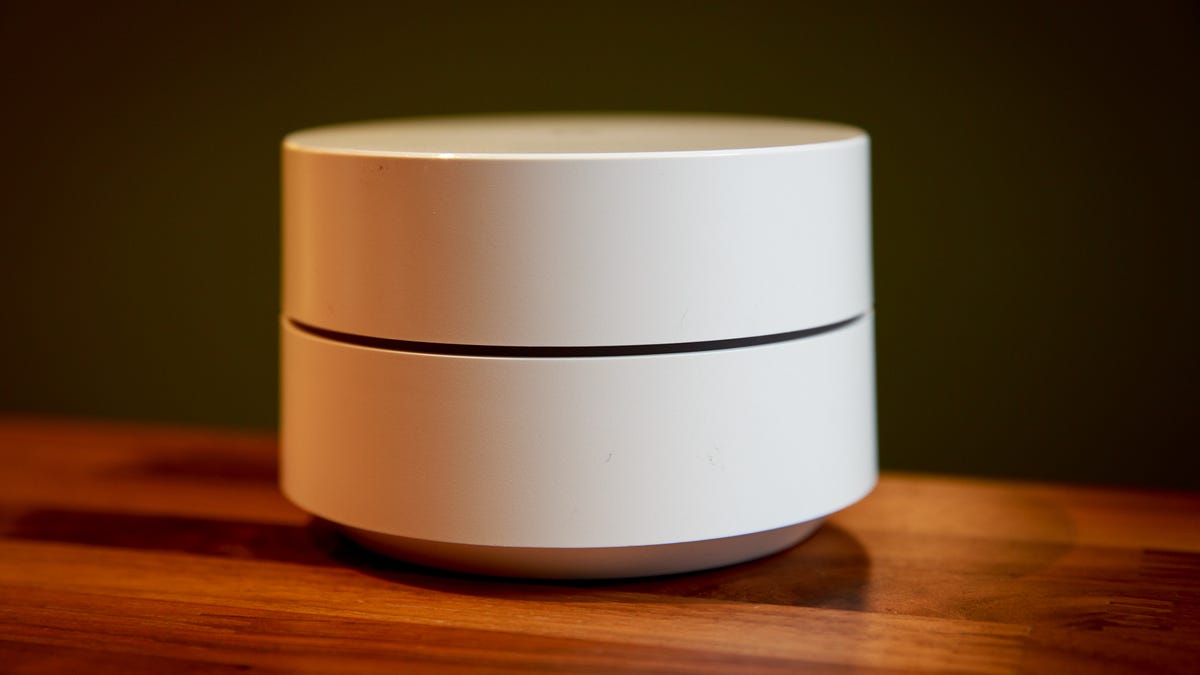10 tips to get the most out of Google Wifi
Google Wifi does more than blanket your home in Wi-Fi signal. Here's how to get your money's worth.

Setting up Google Wifi is a straightforward process. Plug each unit in, follow the prompts and enter information when asked.
But what do you do after setup is complete? You create a family group, guest network and give your Roku priority access during a binge session of "Narcos" on Netflix.
Here's how to do just that and more.
Locating local internet providers
Add network managers
By default the Google account that set up the network is the only network owner, but you can add a spouse or roommate as a network manager. Open Settings > Network Settings > Managers. Enter the person's email address, and tap save when done. He or she will receive an email with instructions.
Managers can do everything you can as an owner, with the exception of adding, removing or factory resetting Google Wifi devices.
Locating local internet providers
Run speed tests
Trying to figure out if your service provider is providing the speeds you pay for each month is always a struggle. Websites like Speedtest.net are helpful, but running a speed test directly from the wireless router is likely more accurate.
Open the Google Wifi app, tap on Settings > Network Check > Internet. Or if you'd rather run myriad tests, tap Run All Tests at the bottom of your phone's screen.
Find out how much bandwidth devices are using
From the main screen of the Google Wifi app, tap on the bottom circle, with a number in it, next to your network's name. A list of devices currently connected to your network, along with each one's bandwidth usage in the last 5 seconds will fill in.
Tap on the "Last 5 Seconds" text at the top to change the overall time frame for usage, ranging from the past day, past week, 30 days or 60 days.
I've used this feature to check and see if my kids were sneaking in extra time on an iPod after bedtime.
Make Netflix get priority speed
By assigning a device priority status, Google Wifi will ensure that the connection to the device has all of the bandwidth it needs. For example, streaming a new movie on an Apple TV or gaming on an Xbox and don't want any buffering? Set it as a priority device.
From the usage list you can tap on the priority button in the bottom-right corner, select a device or devices from the list, provide a time allotment for priority status, and save. Alternatively, you can tap on the Settings tab followed by Priority device.
Pause your child's connection
Tap on the Settings tab, followed by Family Wi-Fi. Select the "+" button in the bottom corner, and follow the prompts to create a label for a group of devices connected to your network. Add devices to the label you just created, and save.
With a group of devices placed under a label, you can pause the connection to those devices on demand by opening Settings tab in the app, then tapping on the label name. To unpause the connection, return to the Settings tab and tap on the label again.
This is a handy feature for keeping your kids, or yourself, focused on homework, work, dinner, or just limiting screen time.
It would be nice if Google made it possible to schedule a label to pause a certain time each day, during homework time, for example.
Create a network for guests
Creating a guest Wi-Fi network is a simple way to give visitors access to a Wi-Fi connection, without potentially giving them access to all of the shared computers and documents on your network.
Start a guest network in the Settings tab by selecting Guest Wi-Fi. You will need a different network name and password for the new network, and you can even grant access to some devices on your main network to those on your guest network -- such as an Apple TV for AirPlay or Chromecast for streaming. In fact, the app will recommend connected speakers and streaming devices.
Return to this same section of the app to turn off your guest network, or adjust any available devices.
Share network password
Have a hard time remembering your password? You can share your password with just a few taps in the app. Open the Settings tab and select Show Password. Your Wi-Fi network's password will show up on your screen, with a share button at the bottom of the page for sending it through text or email.
Restart your network
No matter how good Google Wifi is, you are bound to have issues with your Internet at some point. And for those instances, there's typically no better fix than restarting your network.
Open Settings > Network Settings > Wifi points.
Restart the entire network, or select a specific device to restart it by itself.
Adjust the light's brightness
If you'd rather not have the light ring lit up on a specific Google Wifi device, you can adjust it.
Open Settings > Network Settings > Wifi points and select a unit from the Network devices settings section. Move the slider under Light brightness section in either direction.
Customize network settings
If you prefer to use OpenDNS instead of Google's DNS setup, or want to tinker with port forwarding rules, the advanced settings section is made for you.
On the other hand, if you have no idea what any of that means, it's best to stay away from it.
Open Settings > Network Settings > Advanced networking to customize your network.

